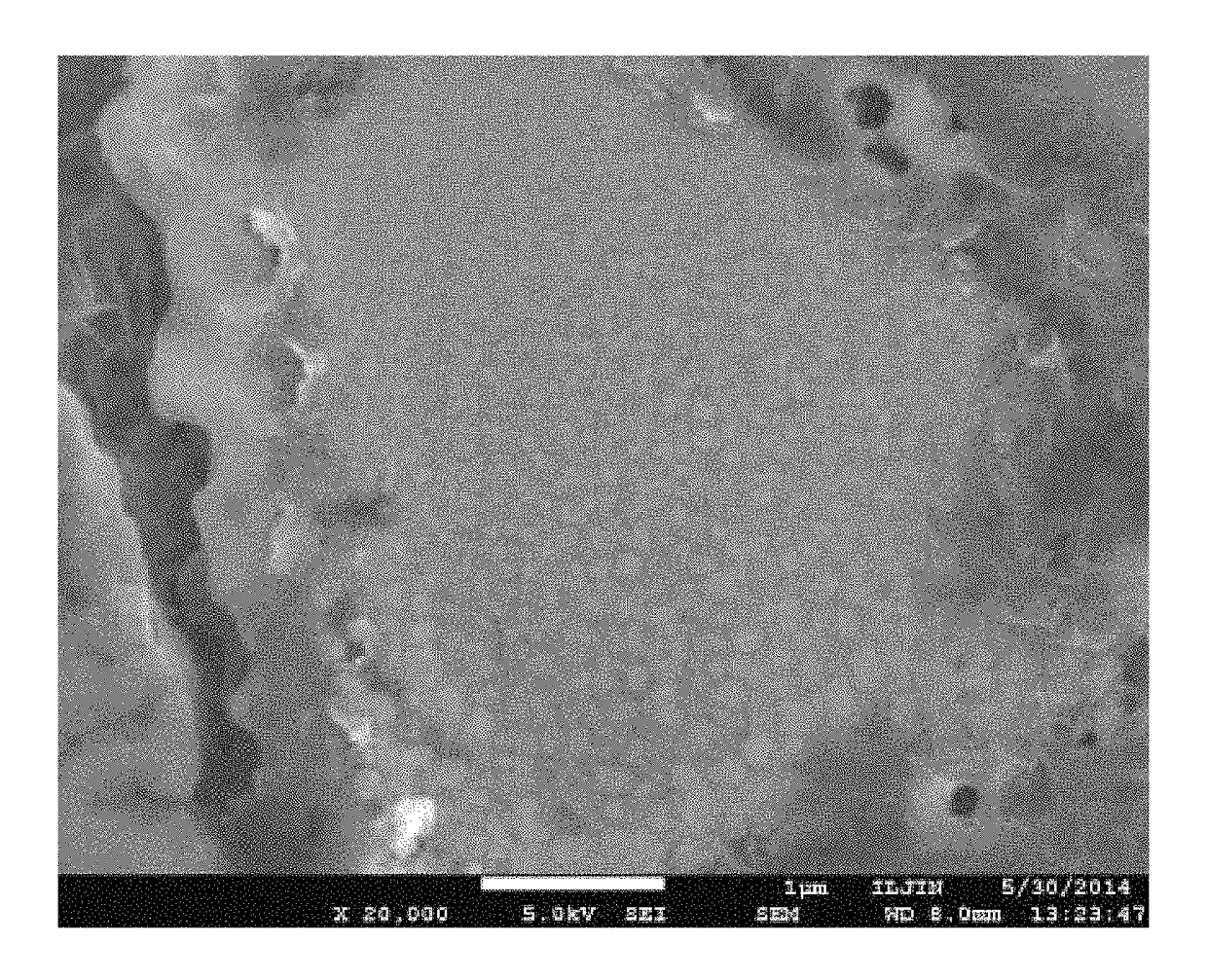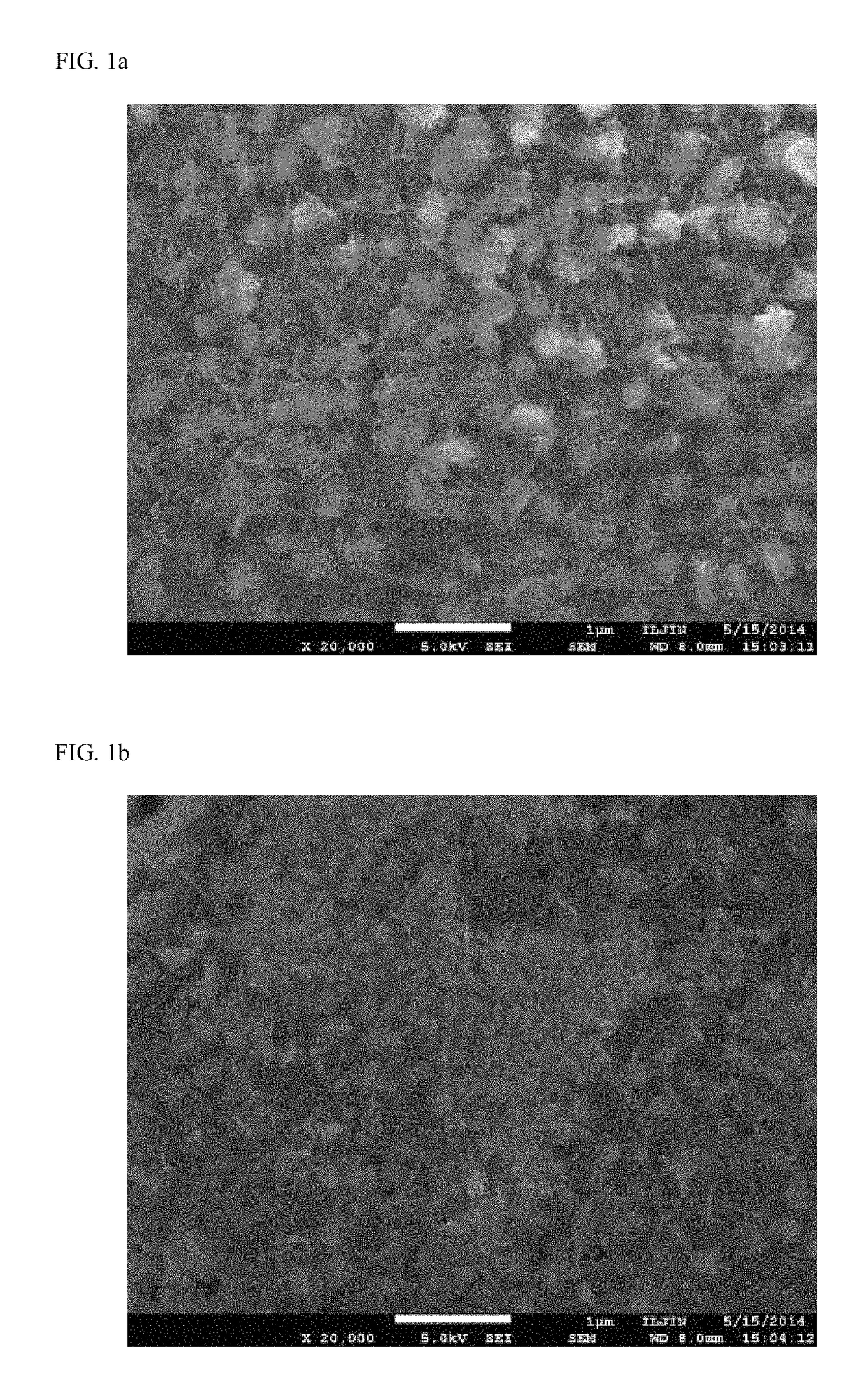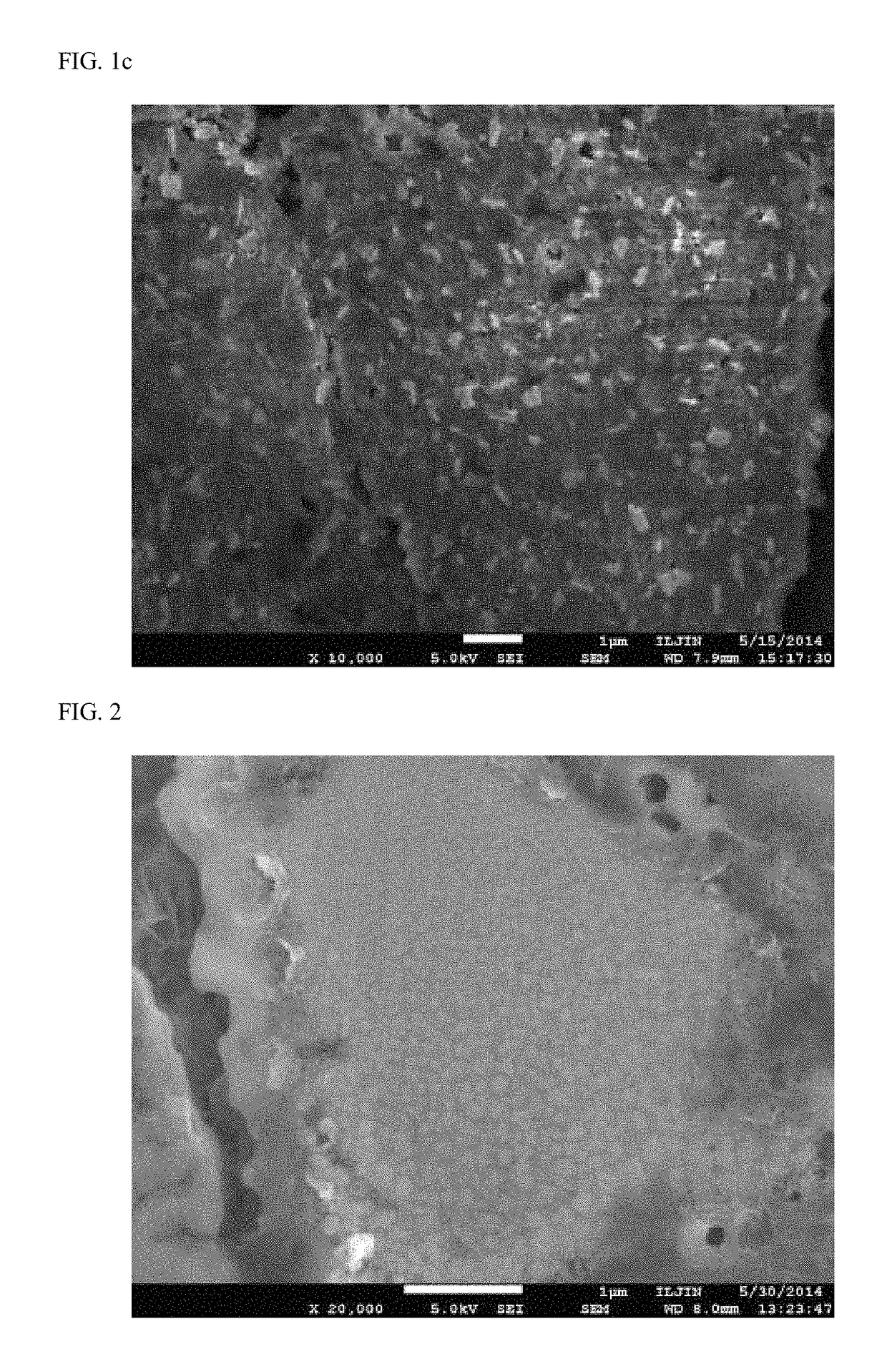Negative active material for secondary battery and secondary battery using the same
a secondary battery and negative active material technology, applied in the direction of cell components, final product manufacturing, sustainable manufacturing/processing, etc., can solve the problems of negative electrodes not being used, negative active materials with cycle characteristic degradation being obstacles to commercialization, and large irreversibility, etc., to achieve the effect of less incurred
- Summary
- Abstract
- Description
- Claims
- Application Information
AI Technical Summary
Benefits of technology
Problems solved by technology
Method used
Image
Examples
example 1
[0060]The present invention will be described in more detail through the Examples.
[0061]In the present Example, Si has a range of 60 to 70% based on at %, and Ti and Fe have a range of 9 to 14% based on at %. In the meantime, the Al has a range larger than 1% and less than 20%, and preferably, a range of 5 to 19%. Most preferably, the Al has the range of 10 to 19%.
[0062]Table 1 below is a table representing a composition range of the Examples of the present invention and the Comparative Examples. In the meantime, Table 2 below relates to an evaluation of a negative active material based on the compositions of Table 1, and particularly, represents a 1CY-charge / discharge quantity, 1CY-efficiency, a 1CY-electrdoe plate capacity, a 50CY-discharge capacity, 50CY-efficiency, a 50CY-capacity maintenance rate, a 50CY-expansion rate, and an amorphization degree (%) of the Examples and the Comparative Examples. A technical meaning for each item of Table 2 will be described in detail below.
[00...
example 2
[0094]Tables 3 and 4 below represent 1CY-charge / discharge quantity, 1CY-efficiency, a 1CY-electrdoe plate capacity, a 50CY-discharge capacity, 50CY-efficiency, and a 50CY-capacity maintenance rate of the Examples of the present invention and the Comparative Examples for an experiment for confirming a ratio range of Ti and Fe. A technical meaning of each item of Table 4 has been described above.
[0095]Table 3 represents composition ranges of the Examples of the present invention and the Comparative Examples in order to confirm a ratio range of Ti and Fe. The experiment was performed by fixing at % of other materials, except for Ti and Fe, and changing only a ratio of Ti to Fe.
[0096]According to Table 3, a ratio of Ti to Fe may be a range of 2:1 to 1:2, and more preferably, 1:1. In all of Examples 6 to 8 in which a ratio of Ti to Fe is maintained in the range of 2:1 to 1:2, capacity maintenance rates are 90% or more, which is high, and in Example 7 in which a ratio of Ti to Fe is 1:1, ...
PUM
| Property | Measurement | Unit |
|---|---|---|
| 2θ | aaaaa | aaaaa |
| volume fraction | aaaaa | aaaaa |
| energy density | aaaaa | aaaaa |
Abstract
Description
Claims
Application Information
 Login to View More
Login to View More - R&D
- Intellectual Property
- Life Sciences
- Materials
- Tech Scout
- Unparalleled Data Quality
- Higher Quality Content
- 60% Fewer Hallucinations
Browse by: Latest US Patents, China's latest patents, Technical Efficacy Thesaurus, Application Domain, Technology Topic, Popular Technical Reports.
© 2025 PatSnap. All rights reserved.Legal|Privacy policy|Modern Slavery Act Transparency Statement|Sitemap|About US| Contact US: help@patsnap.com



